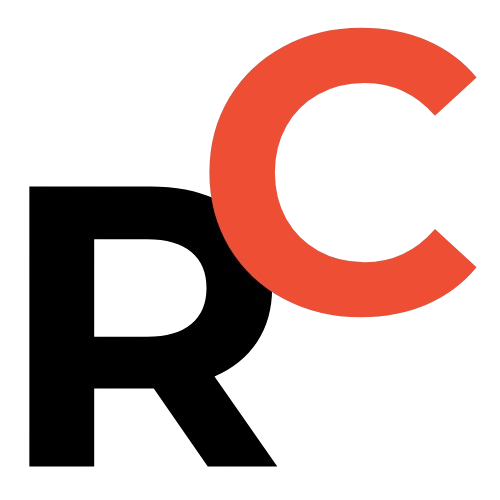
Are you ready to pivot your career but unsure how to make your resume shine? Crafting the perfect resume for a career change is both an art and a science—it requires showcasing your transferable skills while telling a compelling story that captures the attention of hiring managers.
Whether you’re transitioning from a corporate environment to a creative field or moving into a brand-new industry altogether, your resume is your first chance to make a memorable impression. In this guide, we’ll share essential tips and tricks to help you design a resume that stands out in a crowded job market. From optimizing your format to emphasizing relevant experience, you’ll learn how to tailor your document in a way that highlights your unique strengths and positions you as the ideal candidate for your next opportunity.
Understanding the Importance of a Strong Resume in Career Transitions
Embarking on a new career path can be both exhilarating and daunting. One of the most crucial elements in this journey is your resume. A strong resume is not just a document listing your past jobs; it is a strategic tool that portrays your story, highlights your strengths, and positions you as the perfect candidate for your desired role.
Hiring managers are particularly interested in candidates who can demonstrate how their previous experiences—regardless of the industry—can be beneficial in the new role. Therefore, your resume should emphasize your transferable skills and accomplishments in a way that aligns with the job you are aiming for.
A well-crafted resume can significantly boost your confidence during the job search process. It serves as a tangible representation of your professional journey and aspirations.
Key Components of an Effective Resume
- Contact Information: Place at the top and ensure it’s professional.
- Professional Summary: Two to three sentences that convey your goals and unique value.
- Work Experience: Use bullet points, quantify results, and focus on relevance to the new role.
- Education: List degrees, institutions, and dates in reverse chronological order.
- Skills: Highlight both hard and soft skills aligned with the job description.
✅ See: How to Write a Resume that stands out – Harvard Business Review
Tailoring Your Resume for a New Industry
Transitioning to a new industry requires repositioning your experiences and skills to meet new expectations.
- Research the industry: Understand competencies and challenges.
- Speak the language: Use industry-specific terms from job postings.
- Align your past experiences: Highlight relevant achievements.
- Include certifications or relevant training: Demonstrates commitment.
“A tailored resume is not a mere listing of past roles but a strategic narrative that positions you as a strong candidate.”
Highlighting Transferable Skills
Transferable skills are the cornerstone of a successful career change. These can include:
- Hard skills: software, data analysis, technical proficiencies.
- Soft skills: leadership, communication, problem-solving.
Use the job description to integrate relevant transferable skills. Quantify achievements and consider creating a dedicated section for them.
Example:
Instead of: “Strong project management skills.”
Say: “Led a cross-functional team of 6 to deliver a marketing campaign two weeks ahead of schedule, increasing engagement by 25%.”
🛠️ Check: List of Top Transferable Skills – Indeed Career Guide
Addressing Employment Gaps and Career Changes
Be transparent and strategic:
- Use functional or combination formats to highlight skills over chronology.
- Explain gaps briefly and professionally in the resume or cover letter.
- Emphasize proactive steps: Certifications, volunteering, or freelance work.
Reframe career change in a positive light using your professional summary.
Read: How to Explain Gaps on a Resume – Monster.com
The Role of a Professional Summary in Your Resume
This is your elevator pitch:
- State your professional identity and goal.
- Highlight relevant skills and achievements.
- Tailor to each job using keywords from the description.
Example Summary:
“Experienced financial analyst pivoting into business intelligence, with a proven ability to extract insights from complex datasets and deliver actionable recommendations.”
Utilizing Keywords for Applicant Tracking Systems (ATS)
Optimizing for ATS is critical:
- Scan job descriptions for keywords and phrases.
- Naturally integrate them into your resume.
- Use standard headings and avoid graphics.
Include keyword variations (e.g., “project management,” “project delivery”).
Formatting Tips for a Clean and Professional Look
Keep it simple, readable, and professional:
- Fonts: Arial, Calibri, Times New Roman (10-12pt)
- Use bold and italics sparingly for emphasis.
- Organize into clear sections.
- Use bullet points and action verbs (e.g., Led, Managed, Delivered).
Tip: Consider a combination format if your past roles don’t align directly with your new field.
Common Resume Mistakes to Avoid
- Generic resumes: Always tailor to the job.
- Too much or too little detail: Be concise but thorough.
- Omitting transferable skills: Highlight what matters.
- Poor formatting: Keep it consistent and clean.
Neglecting the professional summary: This is your hook.
Sample Chart: Key Differences Between Chronological and Functional Resume Formats
Format Type | Best For | Emphasis | Downsides |
Chronological | Consistent work history | Career progression | Highlights gaps and unrelated jobs |
Functional | Career changers or gaps | Skills and accomplishments | Can look vague without context |
Combination | Career changers with work history | Skills + relevant job history | Slightly more complex to format |
Q&A Section
Q: What is the best resume format for a career change?
A: A combination format is often ideal. It allows you to highlight transferable skills at the top and still provides a work history below.
Q: Should I include jobs unrelated to my new industry?
A: Yes, if you can highlight transferable skills or achievements relevant to your target role.
Q: How do I explain a gap in my resume?
A: Be honest and brief. Focus on any upskilling, certifications, or volunteer work you did during that time.
Q: Can I apply for jobs in a new industry without experience?
A: Absolutely. Focus on your transferable skills, relevant projects, and willingness to learn. Supplement your resume with a strong cover letter.
Ready to pivot your career? Your resume is the key to unlocking your next opportunity. With the right strategy, it can open doors to exciting new possibilities!



